In previous posts, we’ve seen numerical results of how various downsampling algorithms deal with Gaussian noise. Now it’s time to look at some pictures.
The algorithms are:
- Photoshop’s bilinear interpolation
- Ps bicubic sharper
- Lightroom export with no sharpening
- Lr export with Low, Standard, and High sharpening for glossy paper
- A complicated filter based on Elliptical Weighted Averaging (EWA), performed at two gammas and blended at two sharpening levels
I haven’t posted noise graphs on the EWA algorithms, but I will do so soon.
The target image is Bruce Lindbloom’s desk, as captured by my camera simulator at ISO 3200, with a 1.25 micrometer (um) pixel pitch, producing an image that is quite noisy.
The other important parameters that I used in this run with the camera simulator.
- Simulated Otus 55mm f/1.4 lens
- Aperture: f/5.6
- Bayer CFA with sRGB filter characteristics
- Fill factor = 1.0
- 0.375 pixel phase-shift AA filter
- Diffraction calculated at 450nm for blue plane, 550nm for the green plane, and 650nm for the red plane
- Full well capacity = 1600 electrons per square um
- Read noise sigma = 1.5 electrons
- Bilinear interpolation demosaicing
All images have been enlarged 3x using nearest neighbor before being JPEG’d.
Here’s the scene as captured by the camera above with the pixel pitch set to 5 um:
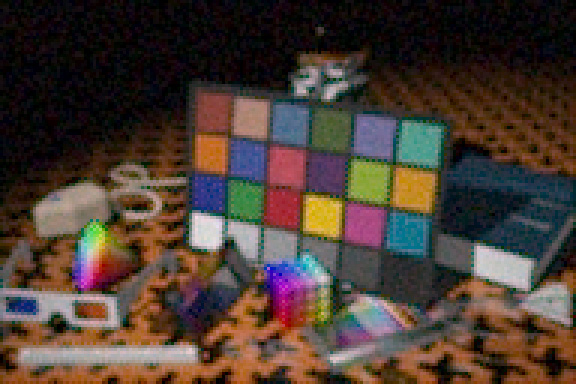
And here are images from the 1.25 um version of the camera (which are quite a bit noisier than the image from the camera with the larger pixels) downsampled to the resolution of the coarser-pixel camera. Because the read noise is assumed constant, in general there is more noise in the 1.25 um camera images even after downsizing than in the 5 um camera image.
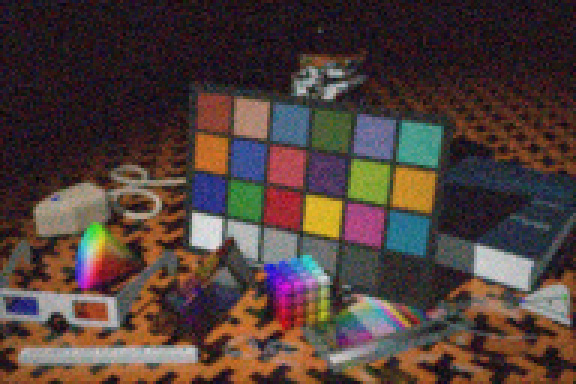
Credible noise performance.
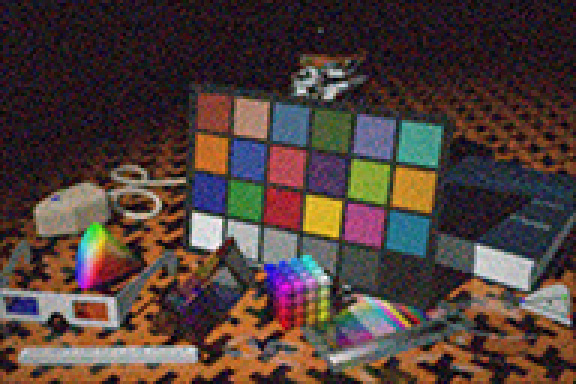
The sharpening emphasizes the noise.
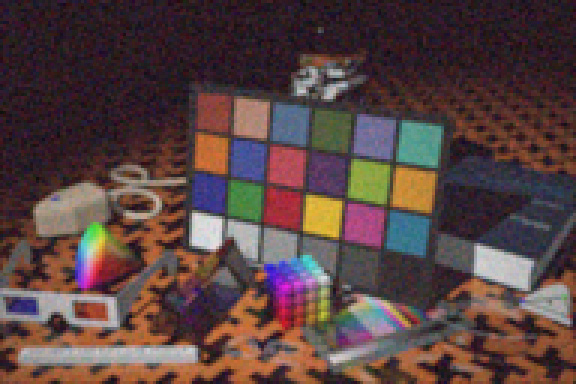
Less noise than the bilinear interpolation image. Shadow areas are lighter.
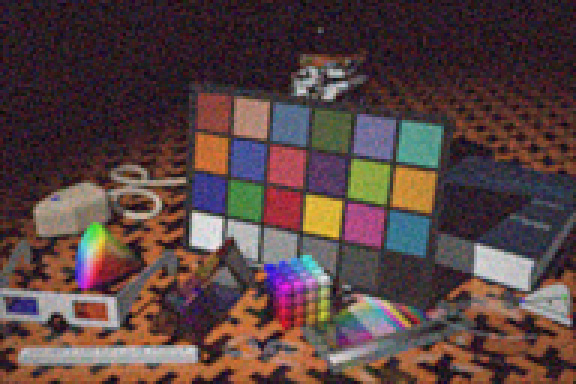
About the same noise as the bilinear interpolation image, but crisper.

Very slightly more noise than EWA with deblur = 50.
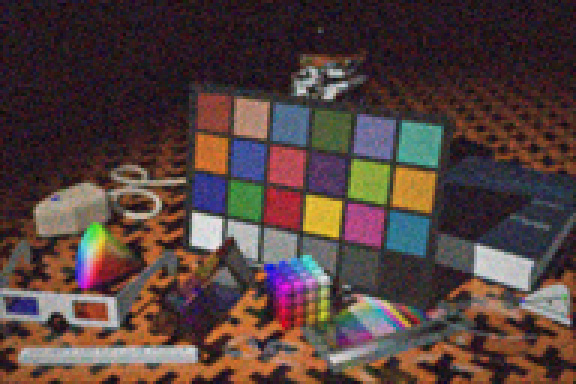
More noise.
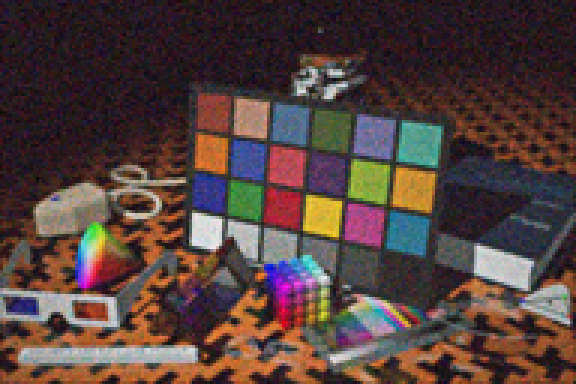
Still more noise.
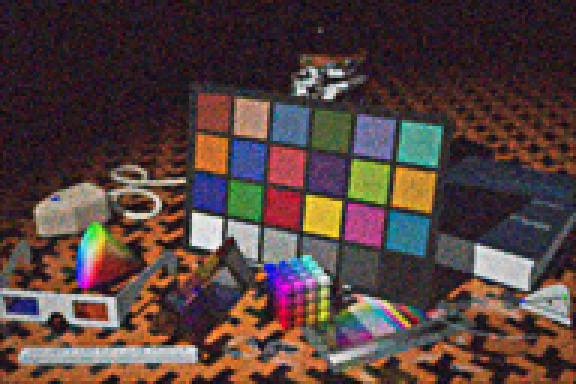
Even more noise
Note that at this resolution, the paper clips have turned into smoke.
Could you please also show results with the hopefully improved version of the “complex EWA scheme” which I cooked up, with Alan Gibson’s help, yesterday?
The modified core is shown (*n*x shell) in .
More Windowy cut-and-pastable bits are found in .
The heuristic basis of the method is found in